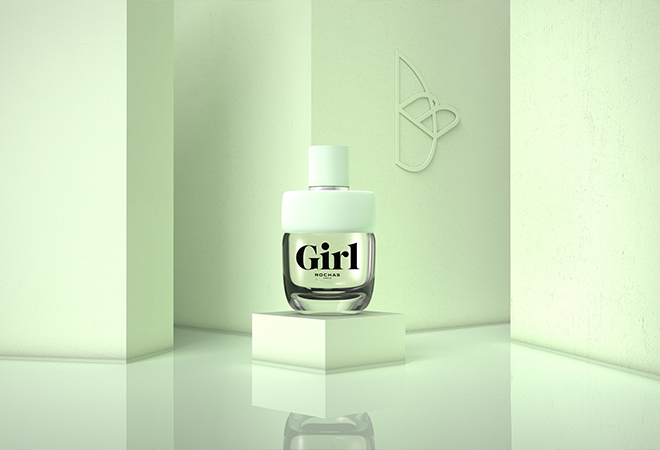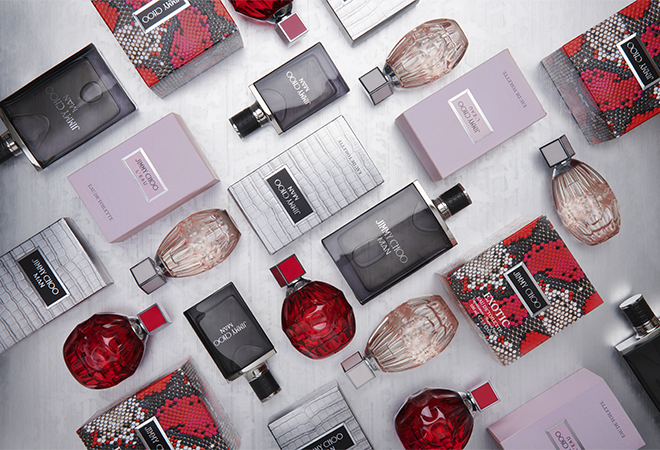Those who claim it’s only what’s on the inside that counts clearly haven’t encountered the work of Thierry de Baschmakoff. A creative maverick with over 35 years of experience, de Baschmakoff is responsible for some of the best selling perfume bottles, beauty packaging, and luxury accessories in the business. There’s his gold and sapphire blue exteriors for the Dior Addict fragrance and lip products, Bvlgari timepieces, and Eau Parfumée au Thé Vert perfume bottles, golden Guerlain powder compacts, Cartier eyewear. Since founding the Aesthete agency in Paris in 1985, he has designed over 6,000 design objects.
When he is not busy designing for clients, the creative maverick is working on the artisanal fragrance houses of The Different Company, co-founded with esteemed nose and former Hermès in-house perfumer Jean Claude Ellena, and J.U.S. (short for jewel, unique, sensory) with fragrance industry veterans Jean-Baptiste Roux and Brigitte Wormser.
BeautyMatter spoke to de Baschmakoff about the creative inputs which ignite his designs, the challenges of the creative process, and the future of beauty packaging.
What makes a great beauty packaging design?
This is a difficult question for those who create the design in question. In the end, it is all the players in the market, including the consumers, who will make a design become a kind of reference. Personally, our most beautiful creations have often been the freest ones, those for which there were few players around the table. A creative process must remain in the hands of the designer in order to preserve the essence of the design.
Like all the designs in the world, what makes it a great product is when it cannot be attached to anything else and its life as an iconic object begins at that precise moment. This always means taking creative risks, without which you end up with a classic design.
How important is packaging to selling the product vision? Has this approach changed throughout history?
The simple fact of constantly creating new packaging shows that the market needs a medium which evolves with time and usage. It is almost impossible to stay on a fixed frame and style—the dynamic is irreversible.
Packaging is the direct link with the consumer, whether in a point of sale or on the internet. Packaging can live without communication but the opposite is not true, which is what makes it indispensable.
The creative approach has necessarily changed, mainly due to the profusion of new brands and therefore new products. You have to be able to imagine concepts and designs that bring something new in the midst of many new products. This requires a good knowledge of the global market and the ability to create within a very limited framework.
What are your thoughts on the industry’s sustainability efforts in terms of packaging?
Beauty is very late on this subject and tries to do the best it can with constraints that are not easy to combine. But for the moment we are witnessing more greenwashing than real effective actions. Mentioning that a packaging is recyclable is not in itself a real action; most materials are recyclable, but some objects are not recyclable because the mix of materials prevents this operation.
It is at the design level that we must act. I often say that if I were to be the most effective in favor of eco-responsibility, it would be to stop creating new designs. So I feel partly responsible for this overabundance of packaging that ends up in the waste.
In 2000, with the creation of The Different Company, I had already imagined a brand in which all the products had a sustainable characteristic. Only glass and metal, no plastic, everything refillable from the smallest to the largest size, the reuse of the object was at the center of the reflection. And today, it remains one of the best alternatives. This is based on a design that includes all these parameters from the start.
In order to accelerate this process, we at the agency have developed a principle that we call The Heart of Design, which aims to design products that concentrate all the current options for recyclability and reusability. In this principle we started with the most difficult object to recycle, the lipstick. The Cheeky project [a 3D printable lipstick component] is articulated around a new principle of an entirely dismountable and customizable mechanism, realizable in a mono material and refillable. This is the kind of contribution designers can make to the market.
What has been the most challenging design to date and why?
The most challenging project for me was a collaboration with Yohji Yamamoto, because his vision of perfume was above all cerebral and very poetic but at the same time confusing for a designer. He wanted the bottle to be a "non-bottle," and for the perfume as well, he had written several pages on his vision of perfume very much linked to his memories, but without mentioning perfumes.
In the end, I proposed the most invisible design possible, taking the shape of the sample tube that all the brands were using at the time, to make a perfume bottle. The only subtlety was that the bottle, which was not very stable when standing up, had a small half-sphere in the glass so that it would not roll on itself.




How have you been expanding your creative practice with The Different Company and J.U.S.?
With The Different Company and J.U.S, these are two brand projects for which I had carte blanche as I was at the origin of both brands. It's very exciting and at the same time scary because you always need a framework to express the design in the best way.
For TDC it was about creating the first contemporary luxury niche brand. A clean but not minimalist design because of its signature code elements, and an eco-responsible approach that was very much ahead of its time because it was 2000.
For J.U.S. it was also a concentration of societal trends in a single brand. Upcycling, reuse, refills, all concepts are not limited to product design but also to merchandising. But the approach, as committed as it is, must not make us forget the aesthetic and qualitative pleasure. These are projects that take original directions, a little outside the codes, which is the best we can do in this market segment, being a laboratory for ideas.
What are the challenges of translating a client’s brief into the final product?
Understanding a client brief is probably the most important part of the project. It is all about the material provided, its precision or lack of precision, the clearly written or deliberately unclear objective.
Often the main framework does not change because it is the brand's. But there is a peculiarity in beauty that each new launch is a new facet of the brand. It's a bit contradictory sometimes with the DNA of the brand itself, but every new perfume is a story in itself, every new makeup range is a new ritual.
It can happen that we have not understood the client and that our creations are in a universe too far from the expectations of the brand; in this case we start again, this first phase of creation will have the merit of allowing a good refocusing. Sometimes we translate the worlds visually with mood boards; this is a new trend to identify and validate together with the client what corresponds most to their vision.
What inspires your aesthetic vision?
The best thing for my creation process is to have an empty head—the dream would temporarily clean my memory. In general, to approach a subject without any pollution is the ideal situation to make creation come, free and very original.
But at the same time having a good knowledge of all that our epoch produces and generates is also a source of inexhaustible interest and creativity. So it’s a matter of opening the tap a little bit of the millions of available images selected while making a vacuum in my mind. I am very sensitive to everything that surrounds us and very impressed by the quality of the creations that we find today all over the world, and it is accessible thanks to the internet of course.
How do the challenges of designing a perfume bottle differ from designing for a skincare or cosmetic product, if at all?
There is a difference but it is mainly in the functionality. For a bottle it is very basic, a cap and a spay, ergonomics is not a fundamental element, we are no more attached to an ergonomic perfume than to a bottle whose aesthetics seduces us more and is not easy to use. For skincare and makeup, features are more present, ergonomics can generate different designs, especially for lipstick for which the mechanism is a constraint.
The bottle remains an object of free expression, and if we look at the history of perfumery we see that this freedom has been used in a very vast and creative way throughout the evolution of perfumery. We can imagine that in the metaverse universes, where we will have even more creativity without limits for the design of not just digital perfumes, but for beauty more globally.
What are the innovations exciting you for the future of creative product design?
The real source of creation and innovation will be these new universes of the Web3. Today we are in a phase of discovery where creation is often a replica of reality. But as we can see with fashion, there are beginning to be very original creations because they have no constraints of manufacture. For the world of luxury and beauty, it is an exceptional opportunity to push the conceptual boundaries.
It can become pure creative research, but one day it will be possible to see the light of day in the real world because the challenge will be to pass from concept to realization. A breath of freedom for all designers and brands.